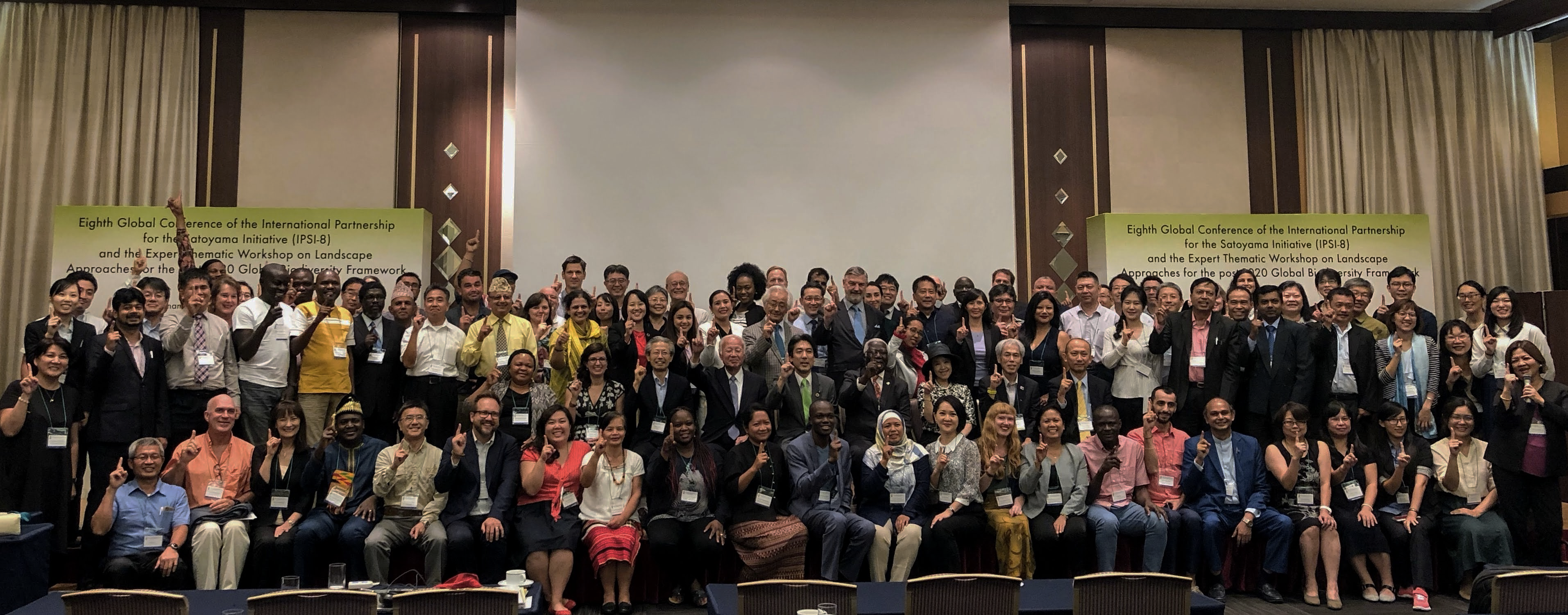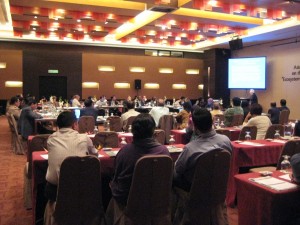The Asia-Pacific Regional workshop on the Satoyama Initiative Concept, was held from 1-3 October 2009 in Penang, Malaysia. About 70 officials and experts participated in the Workshop to review regional management on the satoyama-like landscape as well as discussed on the Satoyama Initiative concept and the partnership vision.
“Ecosystem Services in the Asia-Pacific Region”
1-3 October 2009 (field trip 3 October)
The G Hotel, Penang, Malaysia
The Asia-Pacific Regional Workshop on theSatoyamaInitiative Concept was organized by the Ministry of the Environment of Japan (MoEJ) and the United Nations University Institute of Advanced Studies (UNU-IAS).
Co-organizers are: the United Nations Environment Programme (UNEP), the Secretariat of the Convention on Biological Diversity (SCBD), the Ministry of Environment of Malaysia, the Center for Global Sustainability Study (CGSS) of Universiti Sains Malaysia (USM), the International Council for Science – Regional Office for Asia and the Pacific (ICSU-ROAP), the Institute for Environment and Development of Universiti Kebangsann (LESTARI) of Malaysia, and the Institute for Global Environmental Strategies (IGES).
Abstract
Satoyama landscape, a traditional Japanese socio-ecological production system, is an example of mechanisms by which residents foster their local environment through agriculture, forestry and fishing activities. Satoyama-like landscapes can be found in many parts of the world. Such multi-functional land and ecosystem use — practiced by peoples leading lives centered on agriculture, forestry, animal husbandry and fishing — has sustained millions of people for thousands of years.
Yet, with the various forces of modernization and urbanization, such practices have been increasingly undermined or abandoned, and many ecosystems have been degraded and the corresponding communities weakened. TheSatoyamaInitiative is a global effort led by UNU-IAS and the Ministry of the Environment of Japan so as to evaluate and promote the satoyama-like landscape as a vehicle for re-establishing sustainable interaction between humans and nature.
About 70 officials and experts participated at the Workshop including representatives from the governments of countries in Asia and the Pacific, academic organizations, research institutes, NGOs and international organizations. The Workshop was intended mainly (1) to review the management features of satoyama-like landscapes in the Asia and Pacific region and their benefits for biodiversity conservation and human well-being, and (2) to discuss strategic elements of the Vision and Perspectives of theSatoyamaInitiative concept as well as international partnership under the Initiative, in the context of post-2010 strategy and action plans of CBD and human development.
Agenda and Meeting Documents
Workshop Programme
List of participants
Summary Records
Co-Chairs’ Summary
The thrust of discussions during the workshop and highlights of their key elements download
Discussion Papers
Discussion Paper
The Vision and Perspectives of the Satoyama Initiative download
Information Documents
Information Paper
Satoyama-like Landscapes in the Asia-Pacific Region download
Presentations
Workshop Introductions: The Initiative and Satoyama-like Landscapes
Yoshihiro Natori, Senior Fellow, United Nations University Institute of Advanced Studies download
Ecosystem Services from Satoyama-like Landscape and Human Development
A.H. Zakri, Director, Center for Global Sustainability Study, Universiti Sains Malaysia download
Living in Harmony with Nature
Emil Salim, Special Envoy of the President, Republic of Indonesia download
The Management Features of Satoyama-like Landscapes in Cambodia and their Benefits for Biodiversity Conservation and Human Well-being
Somaly Chan, Director of International Conservation and Biodiversity, Department of the Ministry of Environment, Cambodia download
The Management Features of Satoyama-like Landscapes in Cook Islands and their Benefits for Biodiversity Conservation and Human Well-being
Phillip Strickland, National Environment Division, Environment Services, Cook Islands download
The Management Features of Satoyama-like Landscapes in India and their Benefits for Biodiversity Conservation and Human Well-being
G.V.Subrahmanyam, Adviser, Ministry of Environment and Forests, Government of India download
The Management Features of Satoyama-like Landscapes in Iran and their Benefits for Biodiversity Conservation and Human Well-being
Hamid Farahani Rad, Sustainable Social and Environmental Development Consultant, Iran download
The Management Features of Satoyama-like Landscapes in Nepal and their Benefits for Biodiversity Conservation and Human Well-being
Krishna Chandra Paudel, Director General, Department of Forests, Nepal download
The Management Features of Satoyama-like Landscapes in China and their Benefits for Biodiversity Conservation and Human Well-being
Yu Peng, Associate Professor, College of Life and Environmental Science, Minzu University of China download
Community based ecosystem and biodiversity conservation: Lessons and findings from APFED activities
Masanori Kobayashi, Coordinator and Senior Policy Researcher, IGES download
Native Reserves in Sabah,Malaysia, as an example of Satoyama-like landscape
Motohiro Hasegawa, Chief Advisor, JICA/BBEC II / JICA Senior Advisor download
Bundu Tuhan Native Residential Reserve: Perjuangan & Cabaran
Johnny Ghani, Chairman of the Village Security and Development Committee, Sokid Bundu Tuhan
In English download
In Malay download
Satoyama, Sustainable Use and the Ecosystem Approach: Visions for Biodiversity
Spencer Thomas, Chair of the Subsidiary Body on Scientific, Technical and Technological Advice, CBD download
Recapturing of Day 1
A.H. Zakri, Director, Center for Global Sustainability Study, Universiti Sains Malaysia download
Introduction : How to advance the Satoyama initiative
Tsunao Watanabe, Deputy Director-General, Nature Conservation Bureau, MOEJ download
Satoyama and Ecoagriculture: Building Links among International Programmes for Sustainable Agriculture
Jeff McNeely, Chief Scientist, IUCN and Chair, Board of Eco-agriculture Partners download
Conservation and Adaptive Management of Globally Important Agricultural Heritage System (GIAHS)
Maharaj Muthoo, Member, Steering Committee of GIAHS download
Sustainable Bamboo Forest Management Contributes to Effective Satoyama Landscape Management
J.Coosje Hoogendoorn, Director General, International Network for Bamboo and Rattan (INBAR) download
Local Capacity and Action for the Environment and Sustainable Development
Eileen de Ravin, Manager, Equator Initiative, UNDP Environment and Energy Group download
Incentive Provision: Payments for Ecosystem Services
Cielito F. Habito, Professor, Dept.of Economics, and Director, Ateneo Center for Economic Research and Development, Ateneo de Manila University download
Satoyama: A Tool for the Implementation of the CBD and Benefit to the Millennium Development Goals
Kalemani Jo Mulongoy, Principal Officer, Scientific, Technical and Technological Matters Division, SCBD download
What is the Satoyama Initiative’s Vision?
Kazuhiko Takeuchi, Vice Rector, UNU download




